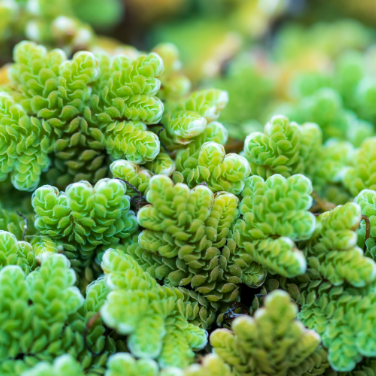Meet the Plant That May Help Us Survive Catastrophes and Reduce Food Insecurity
By Mark Miller
According to the U.S. Department of Agriculture, Economic Research Service, food insecurity is a condition where there is limited or uncertain access to adequate food. It’s a problem that can be exacerbated by extreme, climate-change-related weather scenarios such as droughts, heat waves, windstorms, floods, and more. The article “What are the odds that extreme weather will lead to a global food shock?” published by Yale Climate Connections, reports that insurer Lloyd’s is gauging the possibility that such events could lead to drastic food scarcity, cost trillions of dollars (USD), and potentially kill millions of people.
Growing and accessing sustainable food supplies will play a significant role in our ability to survive such events. Researchers from Penn State University’s College of Agricultural Sciences have published a study in Food Science and Nutrition about their work with wild or Carolina azolla (Azolla caroliniana), a plant that may help us endure global catastrophes and address more immediate food insecurity concerns.
Polyphenolic Potential
Carolina azolla is an aquatic fern native to the eastern United States and is also known as mosquito fern, fairy moss, and water fern. It’s widespread, but unlike other azolla, it hasn’t been adopted as a food source. A Penn State Research report about the study entitled “Common plant could help reduce food insecurity, researchers find” states that other strains of azolla grown in Africa and Asia are used as livestock feed but aren’t suitable for people.
The Penn State researchers found that Carolina azolla holds promise as a human food source because it contains lower levels of polyphenolic content than its African and Asian counterparts. This makes it more digestible and nutritious, according to the report. Polyphenols have antioxidant properties that benefit humans, but higher amounts limit our ability to absorb nutrients. The Penn State team found that Carolina azolla has a total phenolic content of approximately 4.26 grams—comparable to some fruits and beans—while Asian and African varieties have phenolic content between 20 and 69 grams.
"Carolina azolla has the potential to provide large amounts of protein and calories for people and livestock."
Now We’re Cooking
Even though the levels of polyphenols in Carolina azolla were already relatively low, the researchers looked to lower them further by cooking the plants. They tested natural fermentation, pressure cooking, and boiling to see if they could reduce antinutritional factors for humans and livestock.
Pressure cooking was the most effective method; it lowered the phenol content by 92 percent. Boiling reduced it by 88 percent and natural fermentation by 62 percent. The story from Penn State Research doesn’t provide details about how the results tasted, but it does indicate that Carolina azolla has a “neutral” taste and a “crisp” texture in its raw state.
Well-Rounded Resource
Establishing that Carolina azolla is edible by humans is certainly crucial, but it’s just one of the factors determining its effectiveness during a crisis or in helping ease food insecurity. The plant appears to meet several other criteria for addressing these challenges.
It grows in water, which can help preserve resources such as land, soil, and water needed for cultivation. It grows quickly, doubling its biomass in two days. It’s adaptable and can be used as feed for poultry and livestock or as a sustainable fertilizer because of its propensity for fixing nitrogen. These attributes also address many of the needs of smallholder farms and low-income agriculture.
“Whether it be for a ‘quick-fix’ solution in catastrophe scenarios or long-term resilience plan, Carolina azolla has the potential to provide large amounts of protein and calories for people and livestock,” said study leader Daniel Winstead in the Penn State Research report. “If systems for azolla cultivation and preparation can be made more efficient, its indoor or outdoor cultivation after natural disasters could provide supplemental nutrient production that are [sic] climate resilient.”
Mark Miller is a Thermo Fisher Scientific staff writer.
